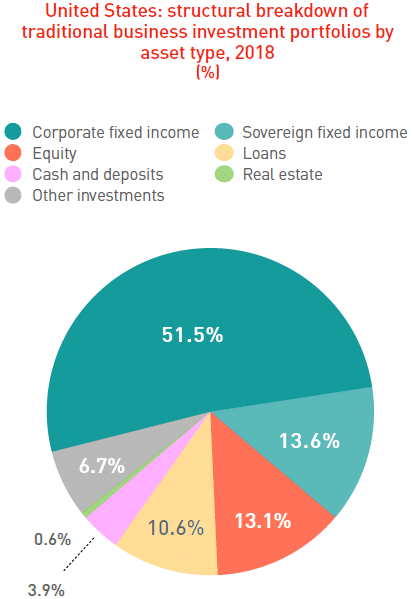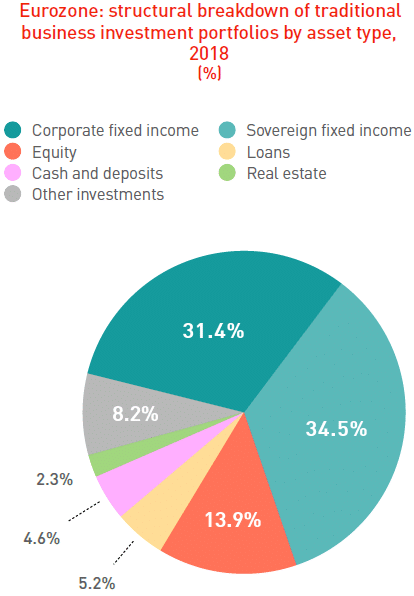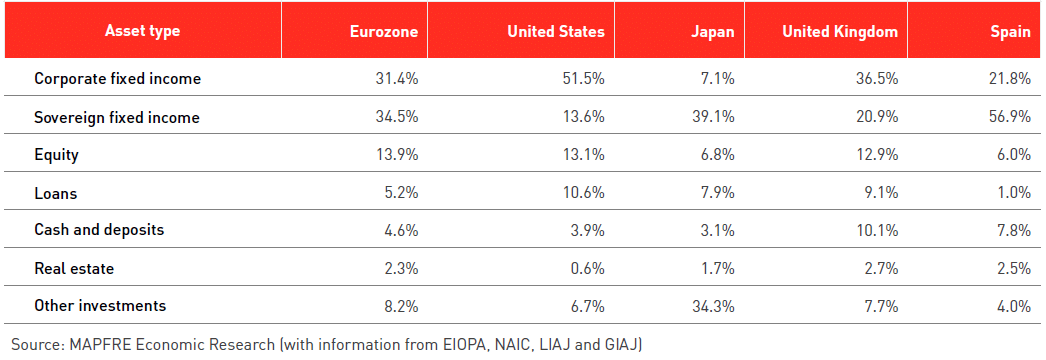Composition of insurance companies’ investment portfolios in the wake of Covid-19


Source: MAPFRE Economics (with information from NAIC and EIOPA)
The insurance industry in Spain is traditionally very conservative in its investments, with the majority of its investment (56.9 percent) being in eurozone sovereign bonds. This puts it in a better position to tackle this crisis, because this kind of bond is backed by extensive ECB asset acquisition programs. The weighting of corporate bonds in the aggregate portfolio is just 21.8 percent, so exposure is lower. The same is true of equity investments, which have suffered widespread declines in valuations due to the pandemic crisis. Once again, the United States and eurozone markets (with over 13 percent of the total portfolio in both cases) hold a higher proportion of aggregate equity investments than Spanish insurance companies, where these account for around 6 percent of the total portfolio.
The following link takes you to the MAPFRE Economics’ study “Insurance industry investment,” which provides a detailed analysis of the aggregate investment portfolios of insurance companies in the eurozone, the United States, Japan, the United Kingdom, Spain, Brazil and Mexico. It also contains an analysis of the credit profile of the investment portfolios of the major European insurance groups.




